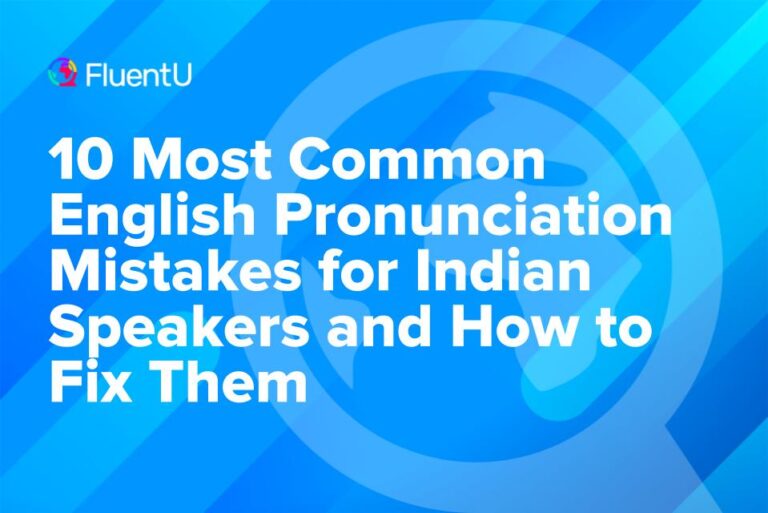The Complete Guide To Linking Consonants in English For Clear Speech

Have you thought about what makes native English speakers sound so fluent?
What exactly is “fluent,” and what do you need to know to sound like a native English speaker?
Fluency is to be able to express oneself easily and articulately, and without a doubt, linking consonants helps you achieve that. Simply put, it’s a tool for clear speech and fluent pronunciation.
Waiting until later to practice accent and pronunciation is a mistake that’ll cost you in the long term. You may end up having to “unlearn” unnatural and awkward pronunciations.
The best speakers of foreign languages know that accent and pronunciation work starts early, so you build good habits from the start – because it’s easier to build good habits than to change bad ones!
Download: This blog post is available as a convenient and portable PDF that you can take anywhere. Click here to get a copy. (Download)
What Is Consonant Linking?
Once you start linking consonants and get accustomed to it, it requires little conscious effort to keep sharp.
Linking consonants makes speaking easier by reducing mouth movement and smoothing out sentences. This economy, as we’ll call it, is the backbone of any language. Because the easier it is to speak, the easier it is to be understood! It’s good news for English learners as it will help give a massive boost to your confidence and overall fluency.
By avoiding sentences that sound labored and difficult to say, you’ll drastically improve your delivery and enjoy more naturally flowing conversations with advanced and native English speakers. Comprehension is crucial, and speaking smoothly and naturally helps achieve it.
Try reading the following sentence out loud:
“We both thought that she’d do it again, but we were wrong.”
Did you pronounce every sound individually, or did it all blend together smoothly?
Perhaps you stopped on a few sounds that you could have dropped to make the phrase sound more natural.
Now try it like this:
“We bo’thought that she’do it again, but we wer’ong.”
Sounds better, right?
When and How You Should be Linking Consonants
There are three ways we link words in English, and two of them use consonants:
- Consonant to vowel
• “Do you remember when Andy got married?” (sounds like “wenandy”) - Consonant to consonant
• “She’s a good dog” (spoken like “goo’dog”) - Vowel to vowel
• “He asked” (spoken like “heeyahskt” with no pause)
1. Consonant to Consonant (And Similar Sounds)
You can link two consonant sounds if the following word starts with the same or similar sound. In this case, we “delete” the consonant sound on the first word, and the words share the consonant sound.
Examples:
- Bad dog (ba’dog)
- Cheap plane tickets (chee’plane tickets)
- Enormous snake (enormu’snake)
But, there are two exceptions to this rule: we don’t link /tʃ/ or /dʒ/ sounds.
For example:
- each choice
- orange juice
In these examples, you can’t link the two consonant sounds. You have to pronounce two sounds individually. Otherwise, it’ll sound awkward and unnatural.
Try to pronounce the second sound immediately after you release the first sound, and it will help you sound more natural.
You can also link words that don’t have the same consonant, as long as the sounds are similar. Take these for example:
- Important deal.
- Cheap boat.
- I need to go now.
The only difference between the sounds is that one is voiced and the other is unvoiced.
The similar-sounding consonant pairs are:
/S/ and /Z/ — cheese_sandwich
/ð/ and /θ/ — breathe_through
/d/ and /t/ — I need_to go to the store.
/k/ and /g/ — My old car was a dark_green color.
/p/ and /b/ — I’m so tired. I need to sleep_better.
/f/ and /v/ — That’s a tough_van. It never breaks down.
2. Consonant to Vowel
Any consonant links naturally to any vowel, so this one is probably the easiest of the three. To link consonants to vowels, you drop the consonant sound at the end of the first word. It’s like dropping the “pause” and treating the consonant as if it belongs to the next word.
Examples:
- That was a great adventure!
- How long are they around for?
- Can I have an omelet?
If you need more help, check out our in-depth guide for linking consonants and vowels for smoother speech.
3. Vowel to Vowel
You can link two vowel sounds together smoothly by adding a /w/ or /j/ sound between them. The /w/ sound is just as it seems, like in Wednesday, weather, or Wendy. The /j/ sound is pronounced like the Y sound, like yesterday, yellow, or yours.
Examples:
I am — sounds like “iyam.”
Realize — sounds like “reeyalize.”
How are you? — sounds like “Howar_you?”
Do it — sounds like “doowit.”
If you’re not sure you’re using the correct sound when linking consonants to other sounds, try different combinations. One will seem more natural than the others, and you’ll immediately know that it’s correct because linking consonants is supposed to make speaking easier!
The right way to link words will always seem effortless and natural because economy is the pillar of any language. Over time, English has been adapted to be as economical as possible to save effort and improve comprehension.
Exceptions When Linking Consonants
As with many English rules, there are exceptions when linking consonants, and it’s essential to learn them early to start creating good speech habits today.
The exceptions when linking consonants are the six stop consonants:
t, d, p, b, k, and g.
When linking stop consonants to any other consonant, you have to use a brief stop to signal the final consonant of the first word, then blend into the following consonant smoothly.
So, it’s not “coltomorrow” but “cold_tomorrow” with a brief stop, only for a split second. You’re just holding the air in your throat for a moment and releasing it.
Try these examples out loud:
- Good dog
- Hot today
- Lip balm
- Dark green
- Hot sauce
- Big kitchen
- Peanut butter
Take “hot sauce,” for example. It’s not “hahsauce” or “hot-auce,” but “hot_sauce” — stopped T, released s.
You stop the T sound with your tongue on the roof of your mouth for a fraction of a second, ready for the S sound without releasing the T.
Think of it as a soft T, almost like a D sound.
Some English learners have trouble with this and often put a soft “uh” sound between the words, like “dark-uh-green” or “hot-uh-sauce.” This is perfectly normal if you’re new to English and it just requires you to pay a little attention to your mouth movements.
So remember, don’t release the ending stop consonant. Just stop the air for a brief moment.
What’s Important to Remember When Linking Consonants?
1.Don’t Drop The Consonant Without A Stop Or Beat In Its Place
Dropping consonants can seem unnatural to some people. If you’re having trouble, try doubling up on the vowels in the syllable before the consonant, like chee-ee boat instead of cheap boat.
After a few tries, speed it up to “delete” the extra syllable but keep the beat.
2. Don’t Let Punctuation Interfere With Linking
Punctuation doesn’t have the same effect in spoken English as it does with written English. Native speakers will often run sentences into each other, regardless of punctuation marks, like commas and periods. It makes the sentences flow nicer and faster.
E.g., “They already left’didn’t you know?”
3. The Sounds Are More Important Than The Spelling
Be careful not to take the consonant rule too literally and forget about the consonants’ sounds. Words with “ph” and “gh”, like “enough” or “phone”, take an F sound, regardless of the spelling. So remember that when you’re linking!
Some Tips And Phrases To Remember
Many language learners tend to revert to slower, exaggerated pronunciations that they learned when they first saw words outside a sentence context. Many will even continue like this after hearing a native or fluent speaker because comprehension often overrides auditory perception, and it’s hard to break habits once they stick.
So, it’s essential to drill new words and sentences regularly to build the good habit of linking words like a native English speaker.
Use these phrases to practice and try making a few yourself:
- Meg got married. Did you know that?
- I tried to get there sooner, but I was stuck in awful traffic.
- Every time Mark calls, he’s always complaining.
- I went to Mexico City last year, and it was so exciting!
- Shall we go out to get something to eat?
Conclusion
Using too much conscious energy to pronounce every consonant in your phrases will soon become exhausting, and you may find your motivation suffers as a result.
With regular practice, linking consonants will become natural, and your English fluency will soon explode.
Use the sample words and phrases above to practice regularly and sharpen your consonant linking skills. You can even try creating a few phrases yourself and marking the dropped consonants.







